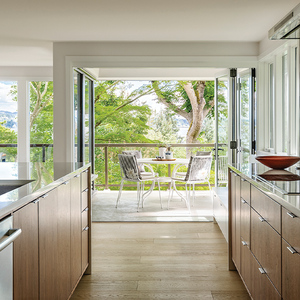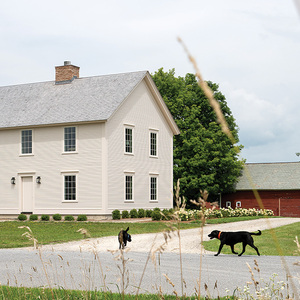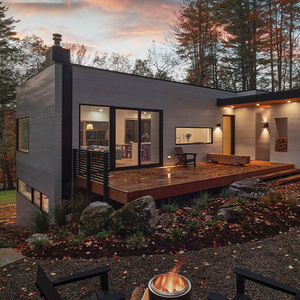I have a question on pouring the slab in my new basement. The basement has a T of footings supporting two interior load bearing stud walls. Based on what I had read and after some discusion, when I built the the walls I used a p.t. 2 bys for the plate and non p.t. studs. The plates sit on the footings. The contractor pouring the slab expressed surprise and said that he would have installed the plate on blocks so that the slab would have flowed under the plate and the slab would be over the footings. As it is, he will pour the slab between the footings so that the slab is level with the top of the footings and the bottom of the plate. And I’ll live with the expansion joint between the two. Fortunately there is sufficient space for granular under the lower slab.
My inexperience with floor slabs is clear. Too late I ask, What is the standard practice for building load bearing stud walls on footings in a basement?An ex-boat builder treading water!
Edited 5/20/2003 4:56:38 PM ET by Bob



















Replies
Guess I'm in the confused category, but standard practice here is to pour the slab on top of any and all footings, and build the walls on top of that. Sounds like you built the walls first?
How'd that work out?
Mad Dog thanks for the response.
The foundation walls are cement, built using ICFs. Once the footings and foundation walls were installed, I knew I would be building the addition pretty much alone. So the plan called for stud walls to support the ground floor rather than beams and pillars. Just easier to build and install. There is a 2x6 stud wall 16" oc on a footing running across the addition and a 2x4 stud wall an 16"oc on a footing teeing into it, making three unfinished rooms in the basement.
I was advised to hold off on pouring the slab until at least the ground floor was on so that I would not have to deal with rain water pooling in the basement. The house is located on a free draining till.
What I have now is a two story addition with a gravel floor in the basement. What I want to do is install hydronic heating in the basement floor. Hence the need for the slab or slabs as it now seems that there will be three of them.
So my mistake was to not pour the basement slab right after the foundation walls went up and then build the walls on that. Apart from having 'floating' slabs, have I got a problem?An ex-boat builder treading water!
Not really, as long as there is something there to provide a barrier between the concrete slab and your framing. When we've done ICF's, the manufacturer has even recommended either plastic or metal between any concrete surface and the framing but as you know doubt are aware, treated wood is used all the time in direct contact with concrete, so as long as all your contact is made at least that good, I don't see a real problem though I'd be uneasy about the floating slab thing myself.
I guess at this point, I would convince myself to forget about the slabs being sort of independent, and hope for the best. If they move, or crack, or whatever they want to do, that's just the way it is and at least it probably won't happen really fast.
I think people overrate slabs cracking and squeeky floors more than any other facet of construction. Most of the time I would like to say, "So what!"
Good luck,
Dog
Our practice has been to design a "haunch" footing below basement level load bearing walls that is poured at the same time as the slab and is essentially a thickened floor slab with reinforcing steel in the bottom with 1 1/2" of concrete cover. The load bearing wall is then construced on top of a pressure treated plate. This often means temporary posts to support the completed floor deck above (these can be burried in the future load bearing wall) or pouring the slab before the weather covering is in place above (pumping the basment out after rain)